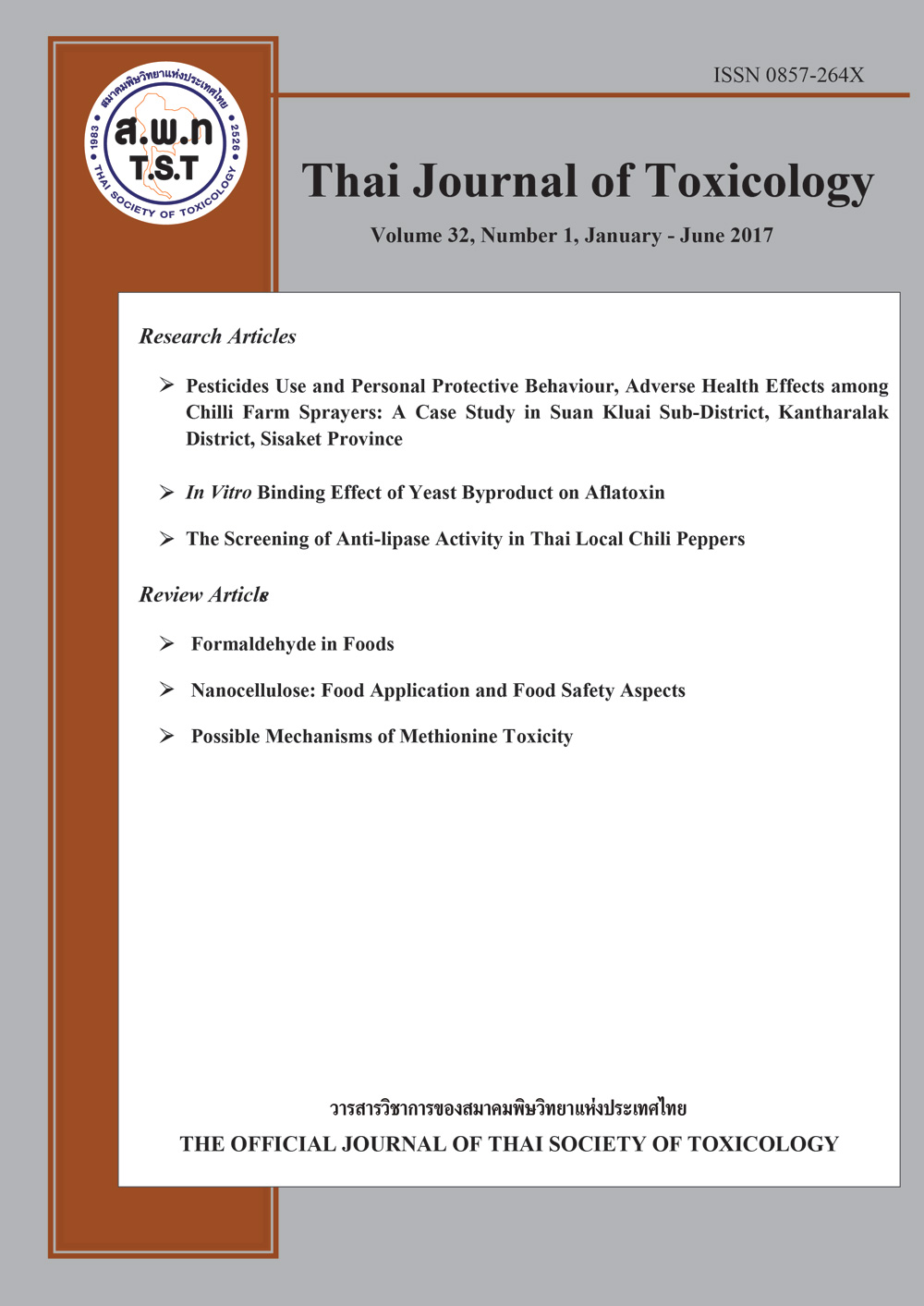Nanocellulose: Food Application and Food Safety Aspects
Main Article Content
Abstract
Agricultural products and by products provides the primary materials for a variety of applications in diverse industrial sectors. One of the most promising by product is fiber from plants which can be used as a raw material for cellulose production. Currently, the developments of technologies provide various methods to extract, prepare, and reduce size of nanocellulose, e.g. chemical extraction, enzymatic pretreatment and mechanical size reduction. Nanocellulose has shown great potential applications, including stabilizing agent, fat replacer, emulsifier, dietary fiber, and reinforcing agent. It has attracted the attention of scientists and technologists worldwide to find a possible way to reduce energy consumption of nanocellulose production and also to extract nanocellulose from various lignocellulosic wastes. The use of this nanocellulose has three advantages of (1) reducing agricultural wastes (2) creating value-added product and (3) reducing synthetic ingredients in food products. According to toxicity studies, nanocellulose does not create cytotoxic or genotoxic concerns and it can be considered to be safe towards humans. However, more information on toxicity of this material is needed to answer safety issue case by case.


